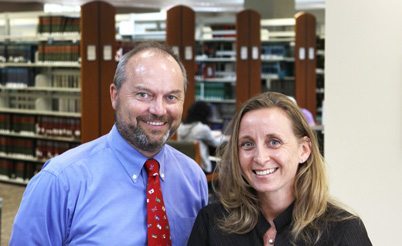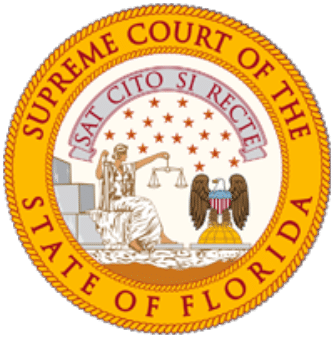by Nancy Kinnally

In his cell at Lake Correctional Institution in Clermont, Fla., Kenneth Young, 25, keeps among his few possessions a worn copy of USA Today dated May 18, 2010, the day after the U.S. Supreme Court ruled that juveniles cannot be sentenced to life without parole for crimes other than murder.
“The newspaper looks like it’s 100 years old, because I done folded it and reopened it and read it so many times,” Young said.
Young keeps poring over the story about the Court’s decision in Graham v. Florida to make sure he didn’t dream it. To a young man who went to prison as a 15-year-old boy, the 1,566 words in that article boil down to one thought: “You might not die in prison after all.”
There it is in black and white.
“Here you go, all your [life] sentences are illegal, unconstitutional,” Young said. “It’s like a blessing. I still kind of find it hard to believe.”
Young is one of 112 Floridians potentially entitled to relief as a result of the Graham decision, according to Gerard Glynn, director of clinical programs at the Barry University School of Law.
With $100,000 in funding from The Florida Bar Foundation through its Improvements in the Administration of Justice (AOJ) Grant Program, Glynn and juvenile defense expert Ilona Vila are developing a Juvenile Life Without Parole (JLWOP) Defense Resource Center within Barry’s law school to address the legal and public policy questions raised by the Graham decision, as well as individual client needs.
Senior Judge Emerson R. Thompson Jr., formerly of the Fifth District Court of Appeals, chairs the Foundation committee responsible for reviewing AOJ grant applications.
“The Supreme Court decided Graham and said juveniles are different and should be sentenced differently,” Thompson said. “The Foundation is funding this project to ensure that the sentence imposed at resentencing is fair to the juvenile and to the citizenry of Florida.”
The Foundation anticipates a second request for funding to enable the Resource Center to complete its two-year project.
“I see this as an opportunity for us to truly address the big policy question, which is, ‘When is it ever appropriate to send children to adult court and for them to face long sentences?’ ” Glynn said. “Florida took a policy position on that in the 1980s, but this decision gives us an opportunity to reevaluate the wisdom of the strategy we took in the ‘80s.”
Writing for the majority in Graham, Justice Anthony Kennedy cited both legal precedent and scientific evidence to establish that juveniles have limited culpability by virtue of their immaturity and susceptibility to negative influences. Meanwhile, “juveniles are more capable of change than are adults,” Kennedy wrote.
He also noted the relative harshness of a JLWOP sentence, saying, “A 16-year-old and a 75-year-old each sentenced to life without parole receive the same punishment in name only.”
Florida at the epicenter
A key underpinning of his opinion was that the sentencing practice for children whose crimes fell short of murder was not only cruel, but also unusual. For evidence of that, Kennedy cited a study by Young’s attorney, Paolo Annino, and his colleagues at Florida State University.
Supervising attorney at FSU’s Public Interest Law Center, also a Florida Bar Foundation grantee, Annino was racing during the summer of 2009, in anticipation of the Graham case, to gather evidence of a phenomenon he believed could be almost unique to Florida.
Through information he had obtained from the Florida Department of Corrections, Annino knew that Florida had at least 77 JLWOP cases based on a conservative tally, but he lacked precise data on other states.
“Then the Graham case was accepted by the U.S. Supreme Court and at that point there was a need for an empirical study,” Annino said. “And I thought [Florida was] going to be an outlier, but I really did not know at that point. My information was still anecdotal. And it turned out that we were an outlier of an outlier. We were the only country in the world who gave life without parole sentences to juveniles for nonhomicide, and then [Florida was] an outlier within the country.”
Through information requests to all 50 states, Annino found that nationwide only 109 people convicted as juveniles were serving life without parole for nonhomicide offenses, meaning Florida prisons held the vast majority. The Supreme Court found 20 more by requesting information from the federal prison system as well as a few states that had refused to respond to Annino’s queries. Besides Florida, only 10 states reported having any inmates serving JLWOP sentences for nonhomicide, and most of those had only a handful.
Florida’s JLWOP numbers were the result of a perfect storm, the conditions for which Glynn said included the practice of trying juveniles as adults; the elimination of parole for noncapital offenses in 1983; and a 1994 legislatively enacted criminal code allowing judges to exceed the statutory maximum sentence.
“There should be incredible national resources coming to Florida, and we’re hoping The Florida Bar Foundation’s money will be able to help us leverage those national resources, because Florida is the epicenter of this problem,” Glynn said.
Cases already moving forward
Since the Graham decision, Barry University has been collecting information about all of the potentially affected inmates and working quickly to make sure every one has a lawyer.
Their sense of urgency stems from their discovery that many inmates, having heard about Graham, have already filed pro se for a resentencing hearing, or were otherwise involved in an appeal.
“The number of cases moving forward is significant,” Vila said.
To ensure that each has quality representation, they are working with public defenders, the Florida Association of Criminal Defense Lawyers, and pro bono attorneys. While they intend to represent a handful of indigent clients themselves, their broader function will be to coordinate Florida’s response to the Graham decision.
The new Resource Center will build on relationships already established through the law school’s Juvenile Justice Center, which coordinates training and support to Florida’s public defenders to improve the quality of representation for children in the delinquency system.
The Resource Center will conduct legal research on the specific procedural and substantive legal issues raised by Graham, create a database of experts, develop litigation strategies, provide technical assistance and education, and coordinate with advocates nationwide representing youth entitled to relief under Graham.
The project will also involve Barry law students as way of providing both extra manpower and a frontline educational experience for future defense attorneys and prosecutors.
Bringing together the experts
While Graham took life without parole off the table, there is a concern that prosecutors could go for lengthy sentences that would amount to life.
“We view all these cases as death penalty mitigation hearings,” Glynn said. “So the hearings should be comprehensive mitigation hearings where you hire experts who study the children’s background and present as much mitigation as is possible.”
Providing a top-notch defense will in many cases require leveraging pro bono lawyers and other experts.
“You may have these pro bono lawyers, especially from the large law firms, who have incredible resources and are great civil litigators, but know nothing about adolescent development or criminal procedure, and so we have to bridge that gap, either through training or through partnerships,” Glynn said.
Meanwhile, public defenders might have the expertise, but lack resources.
“We’ve got some really good defender offices who are saying we’re happy to help but our caseloads are way too high for us to do an effective job,” Vila said. “So how do you take that really great, specialized skill and partner that with resources so that the client gets really great representation?”
Bringing together the best of both worlds will be part of the Resource Center’s challenge. Strategies include development of Web-based resources, conference calls for peer-to-peer mentoring and sharing best practices at state and national meetings.
The Center will also work to bring all that is learned from this shared experience to bear on public policy in Florida as lawyers, judges and legislators seek to respond to Graham.
Spotlight on Florida
While Florida was the only state identified in Annino’s study to sentence juveniles to life without parole for offenses such as burglary, battery or carjacking, some of the JLWOP cases in Florida involve more serious offenses that often result in a life sentence, or one that amounts to life. Glynn believes that because Florida law does not allow for parole under any circumstances, Graham would suggest that the Legislature should act to create a system for reviewing long sentences for juveniles.
“So there is going to have to be some response [from the Legislature], and we hope the Resource Center will significantly participate in that dialog based on our experience,” Glynn said.
Vila said Florida has been thrust into the national spotlight by the U.S. Supreme Court.
“There’s a feeling we’re in a petri dish with all these issues,” she said. “Everyone is just waiting for us to do something. I feel like our partners are ready and waiting to go forward to assist clients, and that’s the most exciting part.”
For Young, who maintains that a neighborhood drug dealer 10 years his senior put him up to the crimes of which they both were convicted 10 years ago, the waiting is not easy. But the Supreme Court decision has renewed his faith in the justice system.
He’s hoping his nearly spotless record as an inmate and the mitigating circumstances of his offenses will be taken into consideration in accordance with the Graham decision.
Now, he is no longer afraid to let himself imagine life on the outside.
“I know one thing that I’m going to do,” Young said, explaining his plan to repay for his second chance by sharing his experience with youth in detention.
“I want to be that voice to let them know,” Young said. “This ain’t no joke.”




